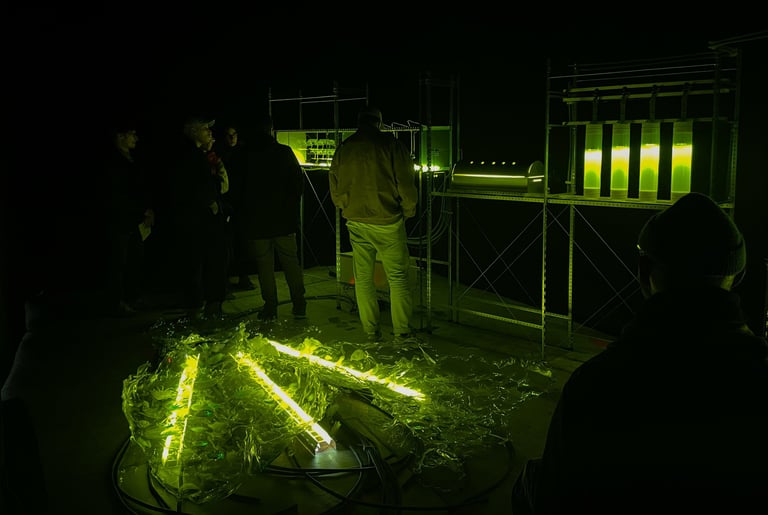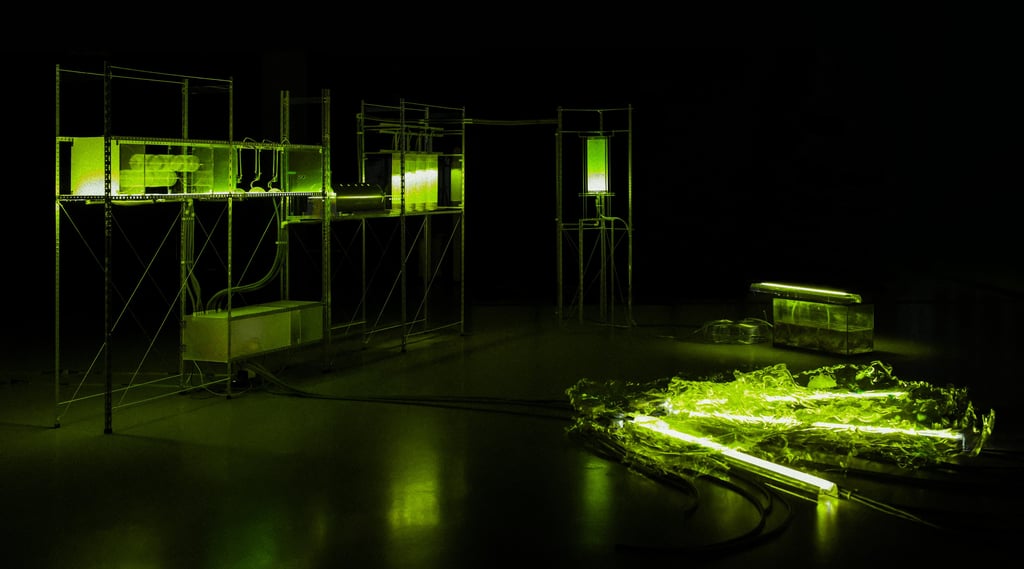

Wetland
Are we ready to accept diverse life forms as extended bodies of AI? Are we fully aware of the un-reversible consequences of AI entering and altering nature? Wetland raises questions about the anthropocentric exploiting of genetic algorithm artificial intelligence in the contemporary science scene to modify natural species. The project brings the audience to a future scenario where humans no longer exist; however, an AI in an abandoned laboratory keeps functioning. It evolves with nature and gradually develops an ecosystem.
The project is a physical fiction, an installation for experiencing. It comprises metal structures that host five machines (a centrifuge, a set of extractors, a microscope, a group of robotic arms for assembling, and a pair of fans), a computer brain, a aquarium, and a plastic landscape inhabited by bio-robots. When the audience enters the space, they will witness different installation sections autonomously light up and work sequentially.


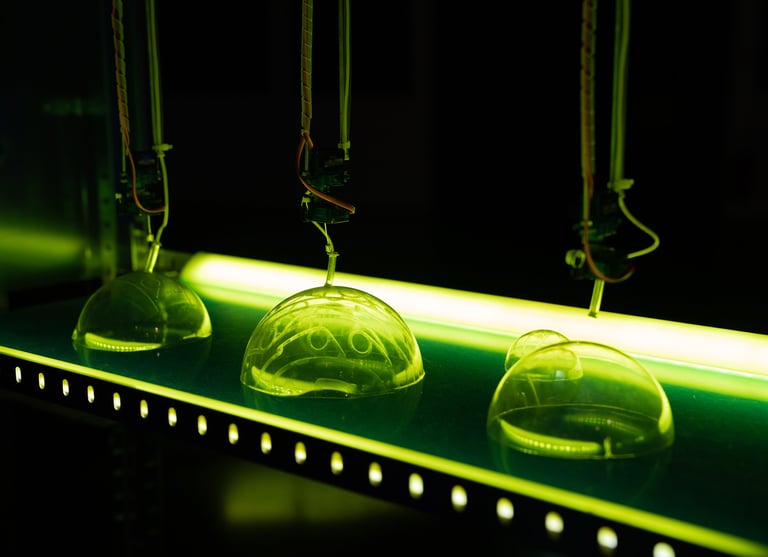

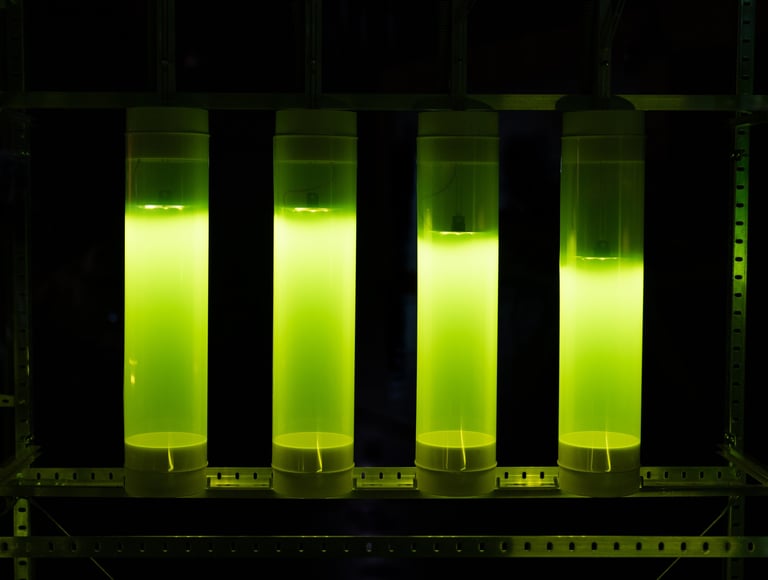


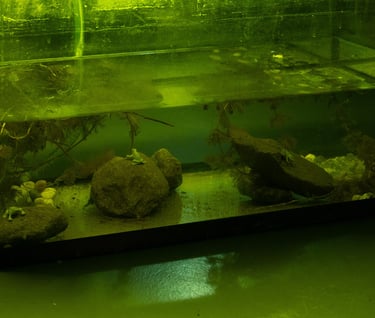
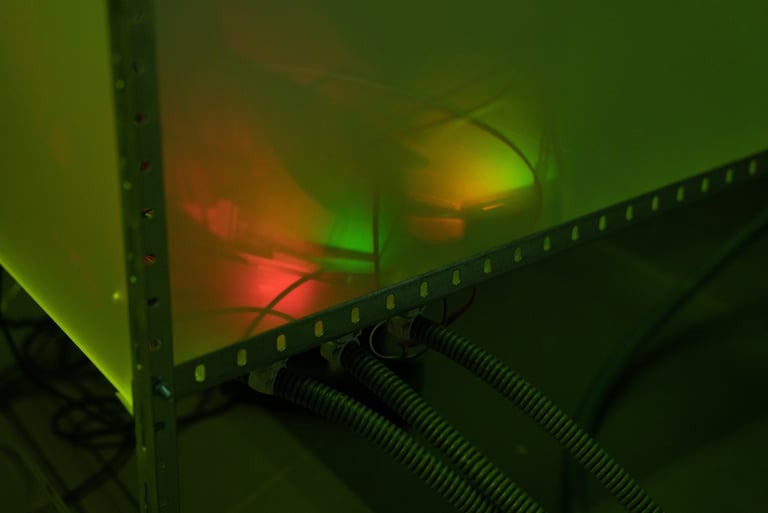

In this project, I developed the concept and narratives by researching the scientific reports, crafting, and experimenting with materials and mechanisms. Elastic materials, such as silicone and PVC, are used to express the organic movements of creatures. Already-made industrial components are used to build the machines for the fictive laboratory. Besides, LED lights and semi-transparent plastic create liquid effects. Arduino is used to control the motors (servo and DC motors) and lights to create theatrical effects.
Wetland tells the story of an AI assigned to design and produce micro-organisms by assembling stem cells from the eggs of African Clawed Frogs into various patterns. After humans were extinguished, the embedded codes within the AI compelled it to carry on with its tasks. It discovered a self-operating solution: the AI dispatched the microorganisms to collect plastic particles from the environment and shape them into bio-robots to aid the frogs in their survival and provide energy for the laboratory.
The narrative challenged the spectators to think from a post-anthropocentric perspective. In a non-human scenario, do we still care about the waste human left in the environment?
The project was finished in 2022 for the Grand Tour at HEAD-Genève. At the time, “AI” only exists fictionally in this project. In 2023, Wetland was selected to be exhibited at Le Commun for Mapping Festival. I decided to slightly modify the installation for this edition by adding Arduino codes generated by the AI language model ChatGPT. The codes controlled the movements of the servo motors in the bio-robots. This modification demonstrated how AI has shifted in the past year: the appearance of hardware didn’t change, while the “intelligence” of the software parts changed. The fiction became closer to reality. Or, maybe, it was reality getting closer to this fiction.


5.5m x 3.5m x 2m (WxDxH)
Mixed-Media Installation
2022
Exhibited at:
2023 Mapping Festival, Le Commun, Geneva, Switzerland
2022 Grand Tour, HEAD — Genève, Geneva, Switzerland
Computer science consultants: Hong-Kuai Chen Ying-Ju Chen
